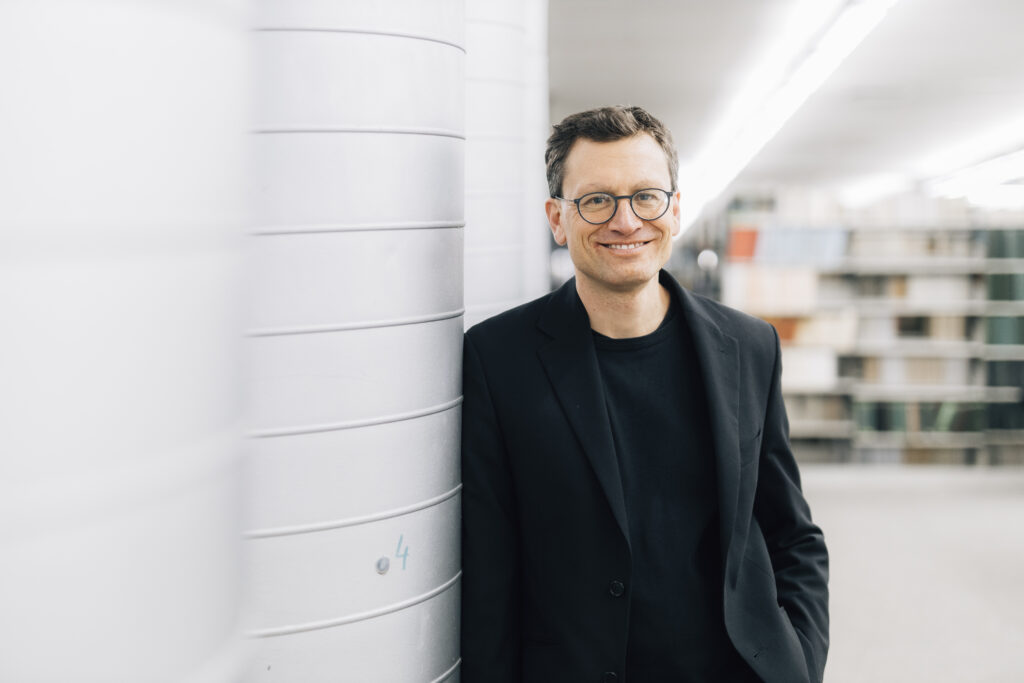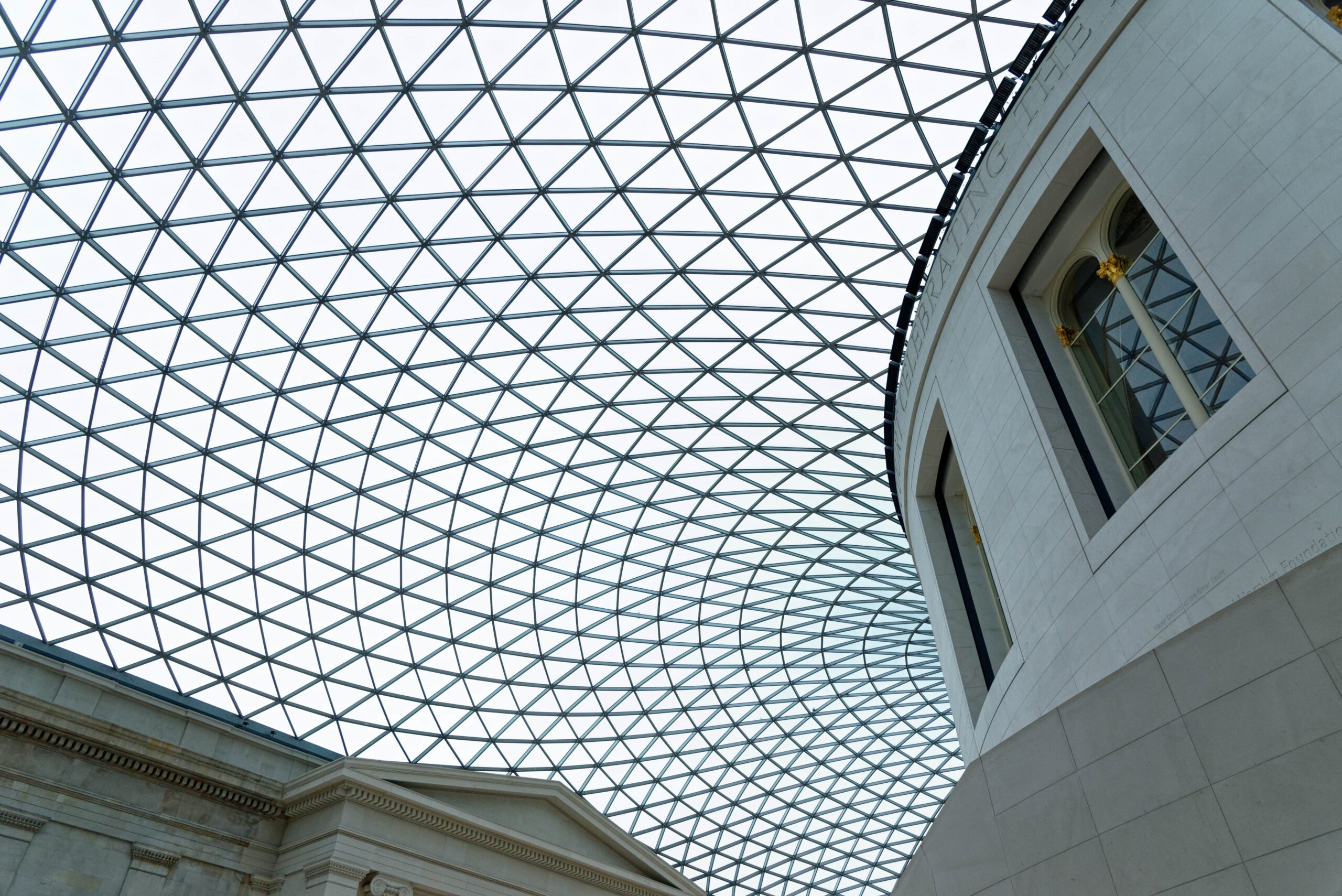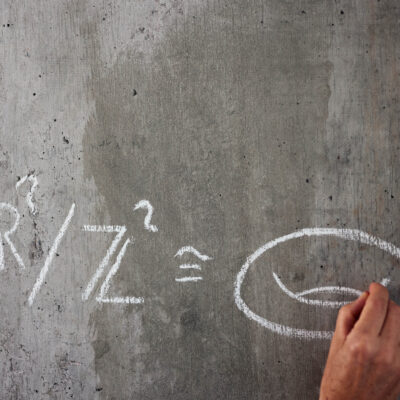For Professor Christopher Voll, mathematics is more than just numbers and formulas—it is a form of art. ‘Discovering a combinatorial structure in algebra makes me aware of the beauty of mathematics,’ he says. He sees an aesthetic in mathematical structures that he compares to music or other art forms. ‘I consider myself an academic and an artist, even if I speak a different language.’ This mindset is reflected in his work—in research, in teaching, and in dialogue with others.
As co-head of no fewer than three subprojects in the Collaborative Research Centre/Transregio 358 ‘Integral Structures in Geometry and Representation Theory’, Christopher Voll focuses intensively on what are known as combinatorial structures in algebra. There are areas of mathematics that initially seem quite different but can be combined—combinatorics and algebra are two cases in point. Put simply, combinatorics is the study of how things can be counted, arranged, or connected: for example, how many different ways are there to seat guests around a table at a dinner party? Algebra, in contrast, deals with the theory and practice of solving equations.

© Michael Adamski
Connecting combinatorics and algebra opens up new perspectives. Combinatorial problems can be modelled and solved with algebraic tools, and vice versa. Algebra often provides the language and methods to formulate precise descriptions of combinatorial relationships and gain new insights. ‘For me, these structures also have a geometric aspect,’ says Voll. ‘When I think of the glass roof of the British Museum in London, which is made up of lots of triangles, I see patterns similar to those in the mathematical structures I study in my daily research. Visualizing abstract algebraic structures to make them tangible is an important approach for me.’
Thinking in pictures
This visual approach defines his working environment. ‘I do a lot of drawings and create pictures.’ Three things take centre stage in the algebra laboratory at the university: a sofa, a coffee machine, and a large blackboard. ‘Sometimes doctoral students or other colleagues drop by for a coffee after lunch,’ he says. ‘But because there’s a blackboard, we often spontaneously do maths together.’ This close collaborative work is very important for the researcher. ‘We used to work separately in our offices and only got together at seminars, if at all. Today, collaboration and the exchanging of ideas are much more important. For this, the algebra laboratory is an important catalyst.’
This diversity of perspectives is also a central aspect of ESyMath (Emerging Synergies in Mathematics), a research initiative that brings together different directions, perspectives, and working methods from the various areas of mathematics at Bielefeld University. ‘One of the ideas behind ESyMath is placing the focus on other perspectives,’ says Voll, who helped launch the initiative. ‘When fundamentally different working methods come together, they generate real added value.’
The common language of numbers
This initiative involves numerous researchers from the university who work in mathematics—academics from not only the Faculty of Mathematics but also the Faculty of Business Administration and Economics, the Faculty of Physics, and the Faculty of Technology. ‘It’s surprisingly easy to interact with people who love maths,’ says Christopher Voll. ‘We talk about mathematical objects and problems together and realize that, although we speak different languages, we often mean the same things.’
His curiosity about approaching mathematical questions from different angles has stayed with Voll throughout his academic career. After completing his doctorate at the University of Cambridge, he was a postdoctoral researcher at the University of Oxford. Then followed research stays at the Max Planck Institute for Mathematics in Bonn and at the EPFL, the Swiss Federal Institute of Technology in Lausanne. Before coming to Bielefeld University in 2011, Voll was a Reader at the University of Southampton.
Deeper insights through diversity of methods
Voll draws on a wide range of methods and concepts in his work. ‘There are days when I think that I developed my approach myself,’ he says and laughs. ‘But if truth be told, I know that I take inspiration from the work of many others, whether in algebra, combinatorics, or geometry.’
Combining such different techniques allows him to gain deeper insights into complex mathematical structures. Practical applications are not a likely outcome of this pure research; it is really about gaining new perspectives in fundamental research. But in principle, according to Voll, combining these fields may well, in due course, result in solutions to problems in application-oriented areas.

© Michael Adamski
Involving the new generation
Voll is also keen to pass on his enthusiasm for mathematics to students and younger researchers. ‘Research is always driven by the next generation,’ he says. His working group currently includes people from four different countries and varied backgrounds. ‘It is important to me that talent isn’t lost,’ he explains. ‘When I was a student, most of the professors were men, but fortunately there are more women in mathematics today.’ He believes it is important to get schoolchildren interested in maths early on. He highlights particularly the importance of the Teutolab Mathematics at Bielefeld University—a hands-on and experimental laboratory where schoolchildren can explore mathematics in real-life contexts.
Christopher Voll is very passionate about his work—also and especially because it often requires intensive reflection and is intellectually demanding. ‘It’s not easy to do mathematics at a high artistic level,’ he says. ‘But that’s what makes it so fascinating.’





